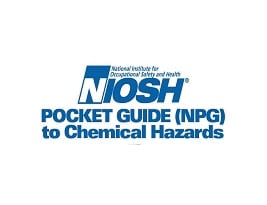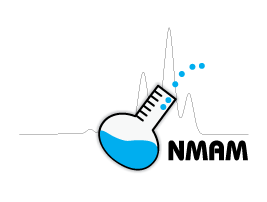Tetrachloroethylene (Perchloroethylene)

Overview
CAS No. 127-18-4
Tetrachloroethylene (Cl₂C=CCl₂) is a colorless liquid with a mild, chloroform-like odor. Exposure to tetrachloroethylene may cause irritation eyes, skin, nose, throat, and respiratory system. It may also cause liver damage and is a potential occupational carcinogen. Workers may be harmed from exposure to tetrachloroethylene. The level of exposure depends upon the dose, duration, and work being done.
Tetrachloroethylene is used in many industries. It’s used to dry clean fabrics, manufacture other chemicals, and degreasing metal parts. Some examples of workers at risk of being exposed to tetrachloroethylene include the following:
- Workers in dry cleaning industries
- Workers who use it to degrease metals
- Workers in industries who use it to make other chemicals
NIOSH recommends that employers use Hierarchy of Controls to prevent injuries. If you work in an industry that uses tetrachloroethylene, please read chemical labels and the accompanying Safety Data Sheets for hazard information. Visit NIOSH’s page on Managing Chemical Safety in the Workplace to learn more about controlling chemical workplace exposures.
The following resources provide information about occupational exposure to tetrachloroethylene. Useful search terms for tetrachloroethylene include “perchlorethylene,” “perchloroethylene,” “perk,” and “tetrachlorethylene.”
NIOSH Chemical Resources
Related NIOSH Resources
- NIOSHTIC-2 search results on tetrachloroethylene—NIOSHTIC-2 is a searchable database of worker safety and health publications, documents, grant reports, and journal articles supported in whole or in part by NIOSH.
- Immediately Dangerous to Life or Health (IDLH) Value Profile: Tetrachloroethylene – Documents the criteria and scientific information used as the basis of the NIOSH IDLH value.
- Dry Cleaners: Organic Solvents—The NIOSH worker Notification Program notifies workers and other stakeholders about the findings of these research studies.
- Dry Cleaners: Organic Solvents/Perchloroethylene—The NIOSH worker Notification Program notifies workers and other stakeholders about the findings of these research studies.
- NIOSH Occupational Safety and Health Guideline for tetrachloroethylene—This guideline helps stakeholders conduct effective occupational safety and health programs.
Selected Publications
- NIOSH Criteria Documents: Criteria for a Recommended Standard: Occupational Exposure to Tetrachloroethylene, DHHS (NIOSH) Publication No. 76-185—Presents a standard to prevent the adverse effects of exposure to tetrachloroethylene over a working lifetime.
- Current Intelligence Bulletin No. 20: Tetrachloroethylene, DHHS (NIOSH) Publication No. 78-111—This Bulletin shares the findings of the NCI study, other pertinent data, their implications for occupational health, and precautions for handling tetrachloroethylene.
- NIOSH Safety and Health Topic: Drycleaning—Provides a collection of resources focused upon identifying and controlling the exposure of workers to tetrachloroethylene (perchloroethylene), as well as other hazards
Related Resources
- ATSDR Public Health Statement: Tetrachloroethylene
- ATSDR–ToxFAQs: Tetrachloroethylene
- ATSDR Case Studies in Environmental Medicine: Tetrachloroethylene
- ATSDR Toxicological Profile for Tetrachloroethylene
- EPA Chemistry Dashboard
- EPA Acute Exposure Guideline Levels (AEGLs): Tetrachloroethylene
- EPA Air Toxics: Tetrachloroethylene
- EPA Consumer Fact Sheet Ground and Drinking Water: Tetrachloroethylene
- EPA OPPT Chemical Fact Sheet: Perchloroethylene
- EPA Integrated Risk Information System IRIS: Tetrachloroethylene
- NLM Hazardous Substance Data Bank: Tetrachloroethylene
- NLM Haz-Map: Tetrachloroethylene
- NLM Household Products Database: Tetrachloroethylene
- OSHA Hazard Communication
- OSHA Safety and Health Topics: Tetrachloroethylene
- OSHA Chemical Sampling Information: Tetrachloroethylene
- New Jersey Hazardous Substance Fact Sheets: Tetrachloroethylene
International Resources
- Canadian Centre for Occupational Health and Safety: Tetrachloroethylene
- European Chemicals Agency (ECHA): Tetrachloroethylene
- Gestis Substance Database
- ILO International Chemical Safety Card: Tetrachloroethylene
- IARC Monograph (Vol 106): Tetrachloroethylene
- IARC Monograph (Vol. 63): Tetrachloroethylene
- IPCS INCHEM: Tetrachloroethylene
- NTP Report on Carcinogens: Tetrachloroethylene
- OECD Global Portal to Information on Chemical Substances
- WHO CICAD 68: Tetrachloroethylene
- WHO Environmental Health Criteria 31: Tetrachloroethylene
- WHO HSG No. 10: Tetrachloroethylene



